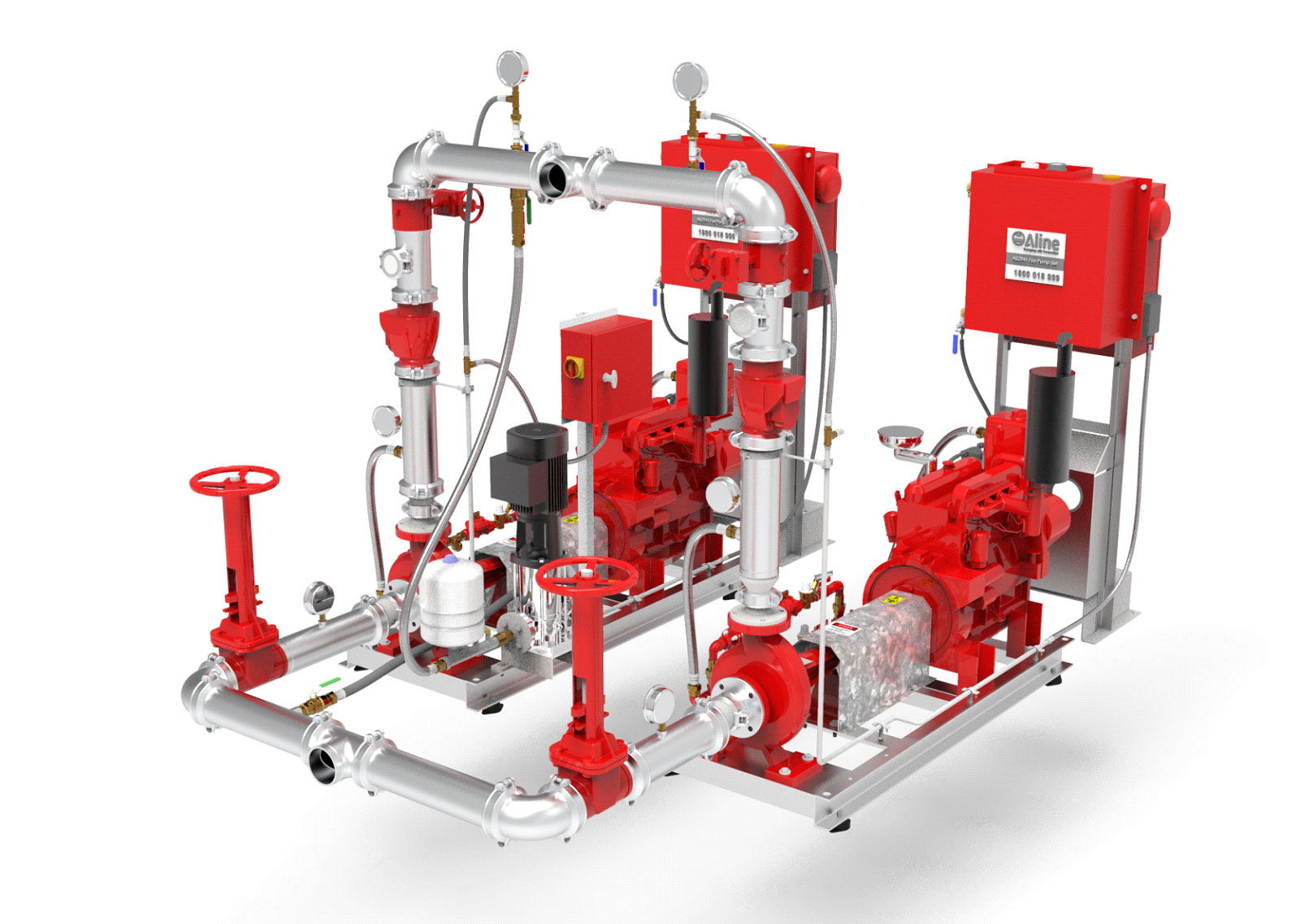Fire pumps are needed when a facility’s water supply can not generate enough hydraulic pressure to meet system demand for sprinklers, standpipes or foam systems. Fire pump systems must be highly reliable and spares must be available.
Vertical turbine fire pumps are allowed by NFPA 20 and come in various rated capacities and pressures with electric or diesel drivers. They are the most common type of fire pump installed in facilities.
Size
Fire pumps require high-pressure water to operate properly, and a correctly sized fire pump is key for ensuring that your building’s fire sprinkler system will work as designed. Sizing requirements for fire pumps are set by NFPA 20: Standard for the Installation of Stationary Pumps for Fire Protection and can be calculated using either the standpipe method or the sprinkler area calculations.
Both types of calculations produce similar results and are both effective at sizing fire pumps. However, sprinkler area calculations are more accurate in higher hazard buildings and have become the preferred method for sizing fire pumps.
When sizing a fire pump, it is important to look at the horsepower curve on the factory-certified test report to ensure that the driver (electric motor or diesel engine) is rated to meet the full duty point required by UL and FM. A driver that fails to meet this requirement will create a significant strain on power systems and could result in a generator shutdown.
Flow Rate
When choosing a fire water pump, engineers must ensure that they are selecting the correct size. A fire pump that produces too little flow is useless and a fire pump that produces too much can damage the system. The best way to determine the right amount of flow is to look at a performance curve from the manufacturer for that specific model fire pump.
Performance curves are plotted of the pump’s rated flow on the x-axis and its net pressure on the y-axis. They can be found on the fire pump’s test report or on the pump nameplate. The churn flow and the maximum allowable duty point (sometimes called overload point) are determined by using the manufacturer’s data from a certified factory test.
During the factory test, the pump’s performance is evaluated at all flows and pressures between churn and the maximum allowed duty point. This information is recorded on a graph and can be compared with the original results from the fire pump’s acceptance test or a certified factory curve.
Pressure
The fire water pump needs to create enough pressure for sprinkler heads, but it can’t generate too much or the components could be blown apart. The fire water pump also can’t create less pressure than the system’s design flow rate because that would reduce its effectiveness.
To ensure a fire pump has adequate pressure, use the manufacturer’s performance curve to determine the net pressure at churn and system demand flow. Then subtract the residual pressure at the system water supply, take into account friction loss in the water line from the water source to the pump and add any NPSH losses caused by elevation changes between the water supply and the water discharge flange on the fire pump.
Also, look at the power curve on the factory-certified test report and see if it peaks and then starts to fall. If it continues to rise, the fire pump driver may be undersized and the installation isn’t in compliance with NFPA 20 and FM requirements.
Noise
Every pump vibrates and produces some amount of noise. Typically, the sound is a hum. Electric pumps will typically have a low decibel level that meets the Occupational Safety and Health Administration (OSHA) standards for hearing protection, while gas-powered fire water pumps can be over 100 dB.
A pump that is making a loud, vibrational noise will often indicate cavitation. This is a common problem with fire water pumps. If you hear a sound that sounds like gravel or marbles smacking inside the pump it is likely due to cavitation. This will also cause short cycling and performance issues in the system.
A fire pump is a crucial part of your building’s sprinkler system and must be kept in good condition. Regular inspections and maintenance should be done. If your fire pump is making strange noises or is not functioning properly, call Texas industrial pumps for service. They can perform weekly, monthly, and annual inspections to ensure your fire pump is ready for use in the event of a fire.




Leave a Reply